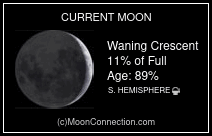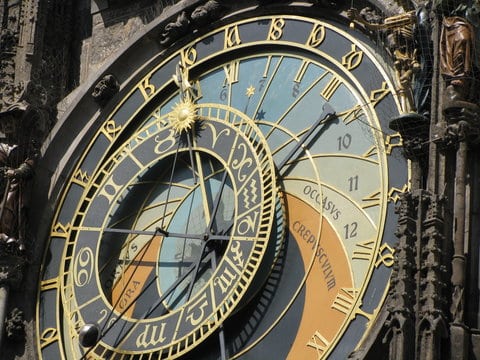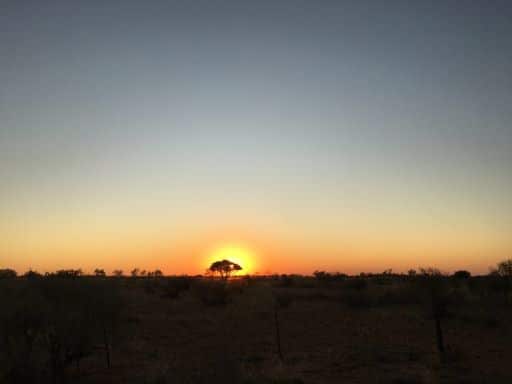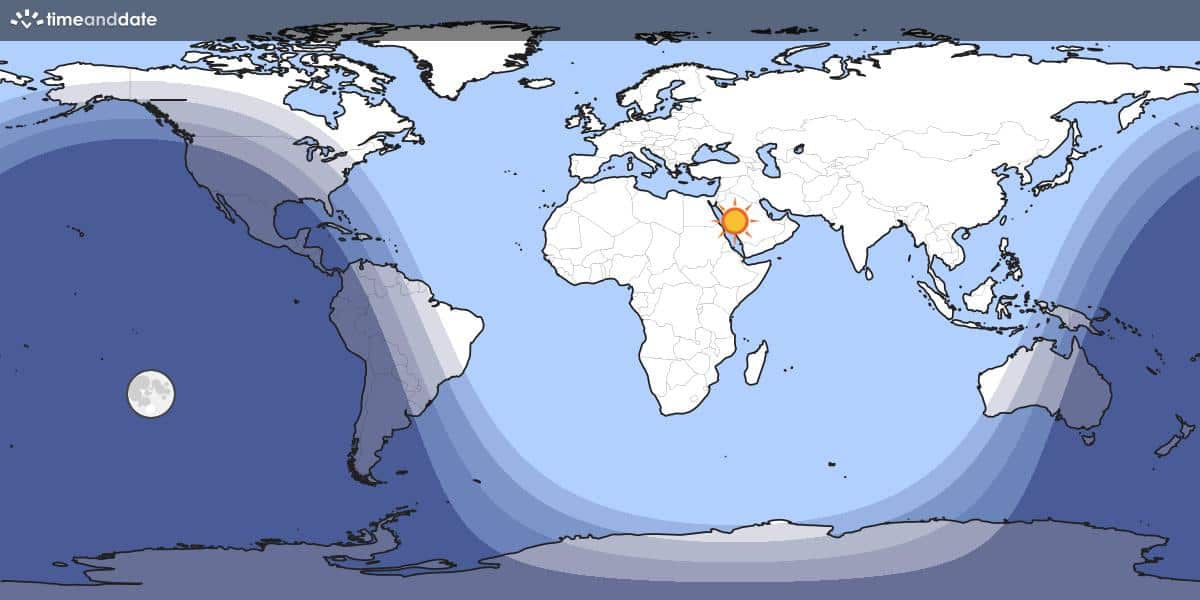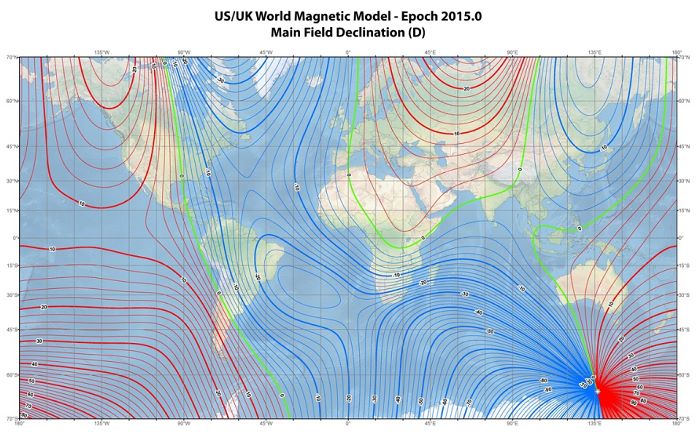Southeast – Chart 3
Steve Gottlieb’s Observations
NGC 1841 = ESO 004-015
04 45 22.7 -83 59 55; Men
V = 14.1; Size 2.4′
18″ (7/9/02 – Magellan Observatory, Australia): at 128x, this LMC cluster appeared as a fairly large, round glow, ~3′ diameter with a low surface brightness and just a very weak concentration. At 228x the cluster starts to resolve into extremely faint 16th magnitude stars.
NGC 1841 resides 14.4° S of center of the LMC’s center in the halo (farthest away on the sky), but it is one of its 15 bona-fide ancient GC’s. It is also the southernmost globular in the sky.
Notes: John Herschel discovered NGC 1841 = h2788 on 19 Jan 1836 and described “pF, L, irregularly round, very gradually brighter middle, resolvable, 3′ diameter. (RA open to much error for want of zero stars to be depended on).” Although his RA is off by 1 minute of time, his position still matches the globular very well at this declination.
Harlow Shapley and John Paraskevopoulos announced NGC 1841 as a globular cluster in 1940 (discovery credited to Mrs. Seyfert) based on a long-exposure 24-inch Bruce plate at Bloemfontein, South Africa. The announcement was in “Southern Clusters and Galaxies” (Harvard Obs. Bull., No.914, 6). The listed V magnitude of 14.1 is almost certainly too faint and it was noted as possibly extragalactic, similar to NGC 2419.
NGC 2012 = ESO 016-005 = PGC 17194
05 22 35.4 -79 51 07; Men
V = 12.9; Size 1.1’x0.6′; Surf Br = 12.5; PA = 117°
24″ (4/4/08 – Magellan Observatory, Australia): fairly faint, elongated 2:1 WNW-ESE, contains a very small brighter core. A very faint star lies close following and a close double star lies 4′ E. An unequal brighter pair lies 5′ NE.
Notes: John Herschel discovered NGC 2012 = h2907 on 22 Jan 1836 and reported “vF; S; little extended; brighter middle; 2 stars 9 mag follow toward the north.” His position is accurate.
S-L 620 = KMHK 1155
05 36 29 -74 24 18; Men
V = 12.6; Size 1.5’x1.5′
25″ (4/3/19 – OzSky): at 244x; fairly faint, large, round, diffuse or fluffy appearance, at least 1.2′ diameter, slightly irregular surface brightness but no visible core. Located 10′ SSE of mag 9.1 HD 38151. S-L 576 lies 13′ WNW.
Notes: Robert Innes discovered S-L 620 on a photograph taken with the 10-inch Franklin-Adams camera of the Johannesburg (Union) Observatory. It was catalogued in the 1924 “Catalogue of Clusters and Nebulae Near the Large Magellanic Cloud” as a “faint nebula, not small.”
Shapley-Lindsay (1963): “Outer resolved.”
IC 2146 = ESO 033-026 = S-L 632
05 37 47 -74 47 00; Men
V = 12.4; Size 2.6′
25″ (4/3/19 – OzSky): at 244x; moderately bright, large, elongated 3:2 NNW-SSE, ~1.5’x1.0′, irregular surface brightness, mottled. The middle appeared slightly brighter, but there was no distinct core. A mag 13 star is at the NNW edge. A few faint stars (mag 15+) were resolved on the south side.
S-L 620, located 23′ NNW, appeared fairly faint, large, round, diffuse or fluffy appearance, at least 1.2′ diameter, slightly irregular surface brightness but no visible core. Located 10′ SSE of mag 9.1 HD 38151.
18″ (4/8/16 – Coonabarabran, 139x and 236x): at 139x this outlying LMC cluster appeared as a large, fairly faint to moderately bright glow, 1.3′ diameter, round, mottled. The surface brightness was relatively low and there was only a slightly brighter core. One or two mag 15 stars were resolved at the SE edge. A mag 13-13.5 field star is at the NNW edge. At 236x, the surface was very mottled with a few interior stars popping in and out of view, suggesting it was on the verge of more resolution. Located 6′ SE of mag 8.0 HD 38331. IC 2140, another LMC cluster, is 39′ SSW.
DeLisle Stewart discovered IC 2146 = DS 304 from a plate taken 18 Dec 1900 at Harvard’s Arequipa Station. He noted, “Cluster, very faint, between 2 stars.”
IC 2148 = ESO 033-028 = S-L 642
05 39 12.2 -75 33 48; Men
V = 14.2; Size 1.1′
18″ (4/8/16 – Coonabarabran, 139x and 236x): IC 2148 is a very faint outlying LMC cluster situated 25′ SE of IC 2140 and 9.5′ SE of mag 8.2 HD 38473. It appeared fairly small, round, 25″ diameter, low even surface brightness.
Notes: DeLisle Stewart discovered IC 2148 = DS 305 on a plate taken on 18 Dec 1900 at Harvard’s Arequipa Station. He noted “vF, vS, bM.” NED classifies this cluster as a globular.
NGC 2144 = ESO 016-010 = PGC 17592
05 40 57.2 -82 07 10; Men
V = 13.0; Size 1.4’x1.1′; Surf Br = 13.4; PA = 93°
24″ (4/4/08 – Magellan Observatory, Australia): moderately bright and large, slightly elongated ~E-W, 1.4’x1.1′. Contains a bright core that increases to the center. Located between a mag 10 star 6′ E and a mag 11 star 6′ WNW. This is the third closest NGC galaxy to the south celestial pole.
Notes: John Herschel discovered NGC 2144 = h3009 on 17 Jan 1836 and reported “F; irreg R; pretty suddenly little brighter middle; 40 arcsec.” His position (measured on 2 sweeps) is accurate.
S-L 783 = KMHK 1535
05 54 39.0 -74 36 18; Men
V = 13.9; Size 1.0′
14″ (4/3/16 – Coonabarabran, 178x): very faint, fairly small, round, 30″ diameter, smooth glow, fairly low surface brightness, no resolution. This LMC cluster is situated 16′ SSW of NGC 2161.
NGC 2161 = ESO 033-031 = S-L 789
05 55 43 -74 21 12; Men
V = 12.9; Size 2.3′
14″ (4/3/16 – Coonabarabran, 178x): this outlying LMC globular appeared moderately bright, fairly large, slightly elongated, nearly 1′ diameter, weak concentration, no resolution. It seemed the cluster was slightly brighter along a central spine oriented WSW-ENE (probably due to slightly brighter unresolved stars).
S-L 804 was picked up 13′ NE as a faint, relatively large glow, round, ~50″ diameter, low even surface brightness. A mag 10.6 star is 6′ SW.
S-L 828, located 28′ ENE, is fairly faint, fairly small, round, ~35″ diameter, smooth surface brightness, no resolution. Two mag 13-14 stars lie 2′ SW.
S-L 783, located 16′ SSW, is very faint, fairly small, round, 30″ diameter, smooth glow, fairly low surface brightness, no resolution.
John Herschel discovered NGC 2161 = h3013 on 8 Feb 1836 and described it as “F; pL; R; gradually pretty much brighter middle; 2′.” His position from a single sweep is about 30″ NW of center. Located outside the boundaries of the Hodge-Wright LMC Atlas.
IC 2161 = ESO 033-035 = S-L 802
05 57 25.5 -75 08 24; Men
V = 14.2; Size 1.5′
25″ (4/6/19 – OzSky): at 244x; fairly faint, moderately large, roundish, diffuse with a low surface brightness, halo fades into the background, ~45″ diameter. A few very faint stars were resolved around the edges, as well as a mag 14 star off the SW side. Located 6′ WNW of a mag 8.5 star.
A brighter group of stars including a mag 10.3 star and two mag 10.6 stars are within 5′ to the north, making it very easy to pinpoint the location of IC 2161. NGC 2203 lies 33′ SE and NGC 2190 is 28′ NNE.
Notes: DeLisle Stewart discovered IC 2161 = DS 309 on a plate taken on 18 Dec 1900 at Harvard’s Arequipa Station. He noted “eF, vS, bM, suspected.”
S-L 804 = KMHK 1569
05 57 38.1 -74 10 25; Men
V = 13.8; Size 1.8′
14″ (4/3/16 – Coonabarabran, 178x): faint, relatively large, round, ~50″ diameter, low even surface brightness. A mag 10.6 star is 6′ SW. Located 13′ NE of NGC 2161.
Notes: Robert Innes discovered S-L 804 on a photograph taken with the 10-inch Franklin-Adams camera of the Johannesburg (Union) Observatory. It was catalogued in the 1924 “Catalogue of Clusters and Nebulae Near the Large Magellanic Cloud” simply as a “nebula”.
NGC 2173 = ESO 033-034 = S-L 807
05 57 58.5 -72 58 44; Men
V = 11.9; Size 2.3′
24″ (4/4/08 – Magellan Observatory, Australia): at 260x this outlying LMC cluster (classified as a GC in SIMBAD with an age of ~2 billion years) appears as a fairly bright, round glow, ~2′ in diameter, weak concentration, no resolution. A wide pair of 12th magnitude stars lies 2.4′ ENE and 3.5′ ESE. NGC 2199 (a galaxy) lies 38′ SE, and NGC 2209, another LMC cluster, lies 68′ SE.
Notes: John Herschel discovered NGC 2173 = h3018 on 8 Feb 1836 and described as “pF; R; gradually much brighter middle; 90″.” His single position is accurate.
NGC 2190 = ESO 033-036 = S-L 819
06 01 04 -74 43 30; Men
V = 12.9; Size 2.0′
14″ (4/3/16 – Coonabarabran, 178x): fairly faint, relatively large, ~1′ diameter, fairly low smooth surface brightness. No resolution, though viewed through thin clouds. NGC 2161 lies 30′ NW. Located 36′ W of mag 5.1 Alpha Men.
Notes: John Herschel discovered NGC 2190 = h3027 on 8 Feb 1836 and described as “vF; R; gradually brighter in the middle; 2′.” His position from single sweep is accurate (45″ NW of center). NGC 2190 is located outside the boundaries of the Hodge-Wright LMC Atlas.
S-L 828 = ESO 034-001 = KMHK 1616
06 02 13.6 -74 11 24; Men
V = 13.7; Size 1.2′
14″ (4/3/16 – Coonabarabran, 178x): fairly faint, fairly small, round, ~35″ diameter, smooth surface brightness, no resolution. Two mag 13-14 stars lie 2′ SW. Located 4′ SE of mag 8.0 HD 42230. S-L 804 is 19′ W.
Notes: Robert Innes discovered S-L 828 on a photograph taken with the 10-inch Franklin-Adams camera of the Johannesburg (Union) Observatory. It was catalogued in the 1924 “Catalogue of Clusters and Nebulae Near the Large Magellanic Cloud” as a “small nebula.”
Shapley-Lindsay (1963) gives a diameter of 40″ diameter and remarks, “Fairly condensed, unresolved.”



